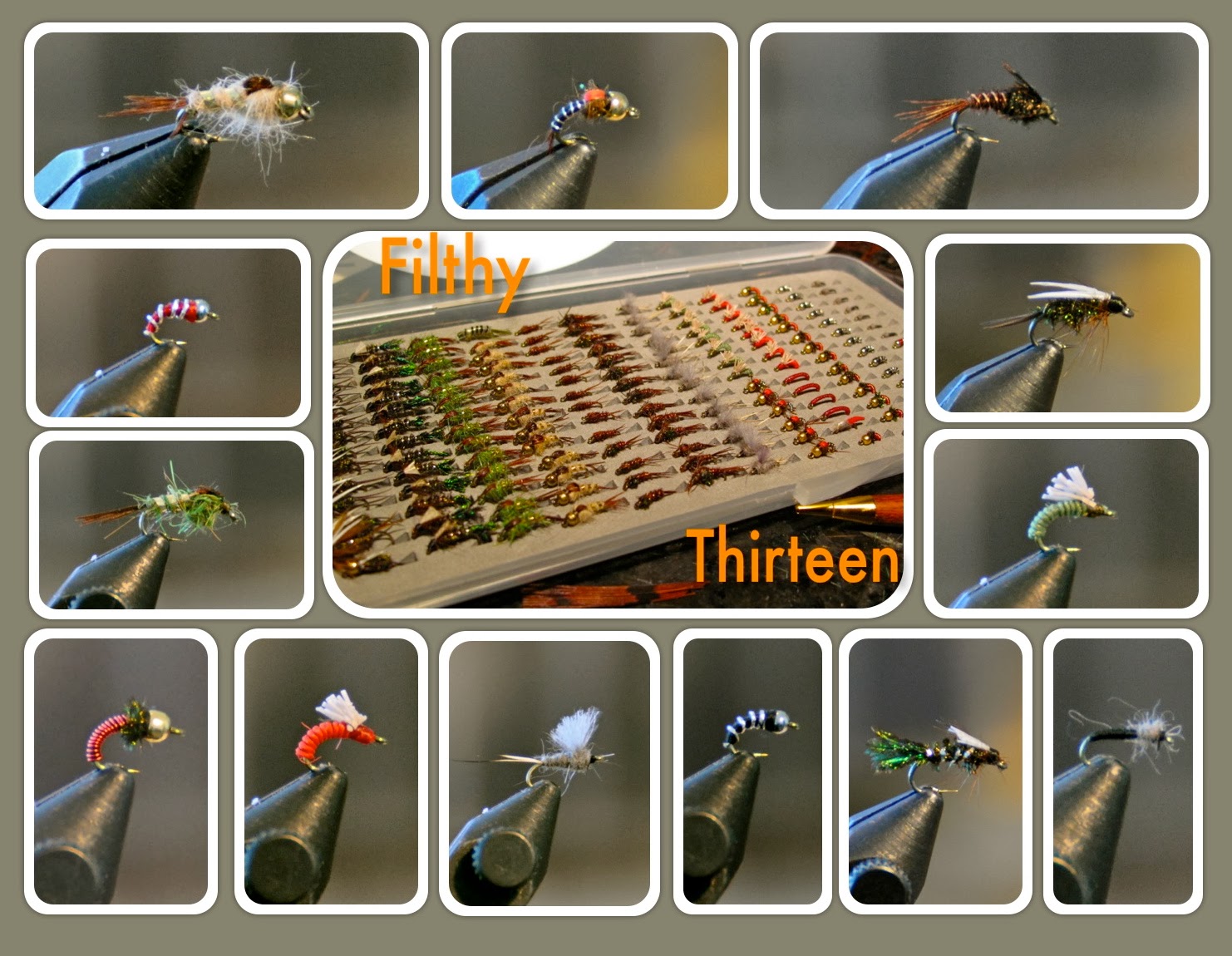Today, I worked on rebuilding my carp fly stash for the pending spring. I stuck to tying favorite patterns; which, was easy since I only have a few. Simply put, big, gold-bead Sparrows catch carp and bigmouth buffs where I fish. So do big, gold-bead soft-hackled Hare's Ears. These patterns work great for sight-fishing; or, drifting blind on a deep broadside or wet-fly swing. However, most of the really big fish (over 30 inches) from last year ate the downstream dangle. As you can guess, I fish rivers and streams.
 |
| Gold-bead Sparrow (Yellow) |
Gold-bead Sparrow (Yellow)
Hook: Size 6-8 Tiemco (your favorite stonefly hook)
Thread: 6/0 Yellow
Tail: Spruce Grouse Marabou Fibers stripped from stem and pinched square
Body: Sulphur Dubbin
Rib: Flat Gold Tinsel
Weight: 7 turns small lead wire
Hackle: Spruce Grouse Rump Feather (1-2 turns)
Collar: Spruce Grouse Aftershaft Feather (2-3 feathers wrapped one at a time)
Head: 3/16" Gold Bead
Note: I have caught more Buffalo and Carp on this than anything else. Jack Gartside just might be a genius.
 |
| Gold-bead Sparrow (Olive-Brown) |
Gold-bead Sparrow (Olive-Brown)
Hook: Size 6-8 Tiemco (your favorite stonefly hook)
Thread: 6/0 Black
Tail: Ruffed Grouse Marabou Fibers stripped from stem and pinched square
Body: Hareline Dubbin's Olive-Brown Hare's Ear mixed with Antron
Weight: 7 turns small lead wire
Hackle: Ruffed Grouse Wing Covert Feather (1-2 turns)
Collar: Ruffed Grouse Aftershaft Feather (2-3 feathers wrapped one at a time)
Head: 3/16" Gold Bead
 |
| Soft-Hackle Gold-Bead Hare's Ear |
Soft-Hackle Gold-Bead Hare's Ear (Tan)
Hook: Size 6-8 Tiemco (your favorite stonefly hook)
Thread: 6/0 Hot Orange
Tail: Hare's Mask (from top of mask just below and between the ears)
Abdomen: Hare's Ear Dubbin
Rib: Flat Gold Tinsel
Weight: 7 turns small lead wire
Thorax: 5-6 Peacock Herls
Hackle: Ruffed Grouse Wing Covert Feather (1-2 turns)
Collar: Ruffed Grouse Aftershaft Feather (1-2 feathers wrapped one at a time)
Head: 3/16" Gold Bead
Note: This is my version of the pattern tied by Tightline Productions.
Hook: Size 6-8 Tiemco (your favorite stonefly hook)
Thread: 6/0 Hot Orange
Tail: Hare's Mask (from top of mask just below and between the ears)
Abdomen: Hare's Ear Dubbin
Rib: Flat Gold Tinsel
Weight: 7 turns small lead wire
Thorax: 5-6 Peacock Herls
Hackle: Ruffed Grouse Wing Covert Feather (1-2 turns)
Collar: Ruffed Grouse Aftershaft Feather (1-2 feathers wrapped one at a time)
Head: 3/16" Gold Bead
Note: This is my version of the pattern tied by Tightline Productions.



















